Groupers are highly nutritious and sought-after by discerning foodies. They are also versatile in the kitchen, offering a range of delicious and enticing dishes that can support the health of you and your family.
1 What is a Grouper Fish?
Origin of Groupers
Groupers, also known as giant sea bass or threadfin groupers, are a species of fish belonging to the Serranidae family in the Perciformes order.
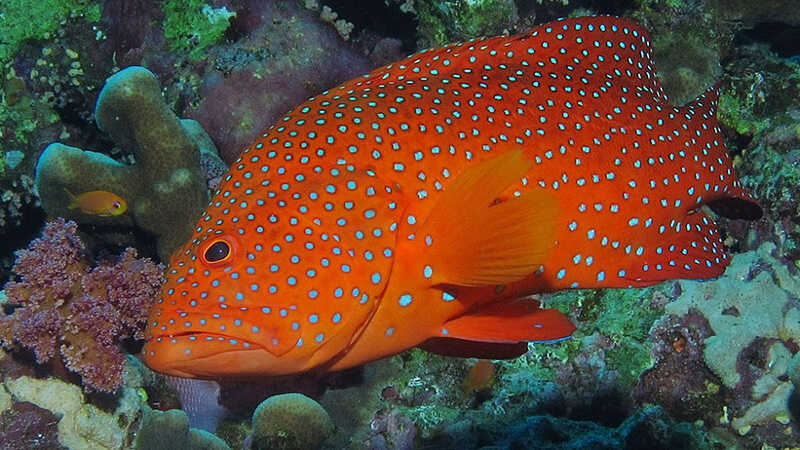 Red Grouper
Red Grouper
Characteristics of Groupers
Groupers are aggressive fish with wide mouths, sharp teeth, and oblique jaws. The lower jaw typically protrudes beyond the upper jaw. The body length of groupers is three to three-and-a-half times their height. They have smooth, streamlined bodies that taper towards the tail, with a flat profile.
Grouper skin exhibits a variety of patterns and colors, including light grayish-green or brown heads and bodies, or faint reddish-brown or dark brown spots extending from head to tail.
For a fully grown grouper, the typical length is 50-75cm, and they can weigh up to 12kg. Groupers are hermaphrodites, capable of changing their gender during their life cycle. They usually start as males and transition to females later in life.
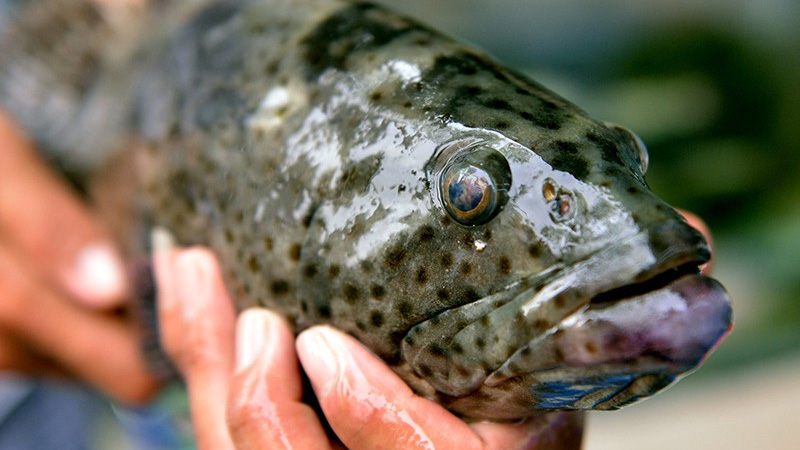 Groupers have wide mouths with sharp teeth
Groupers have wide mouths with sharp teeth
What Do Groupers Eat?
The diet of groupers typically consists of small marine creatures such as fish, shrimp, squid, plankton, and even their own kind during the juvenile stage if they are extremely hungry.
When hunting, groupers often lie in wait and use their large mouths to capture prey. They employ their sharp teeth to hold the prey securely without killing it, and then swallow it alive.
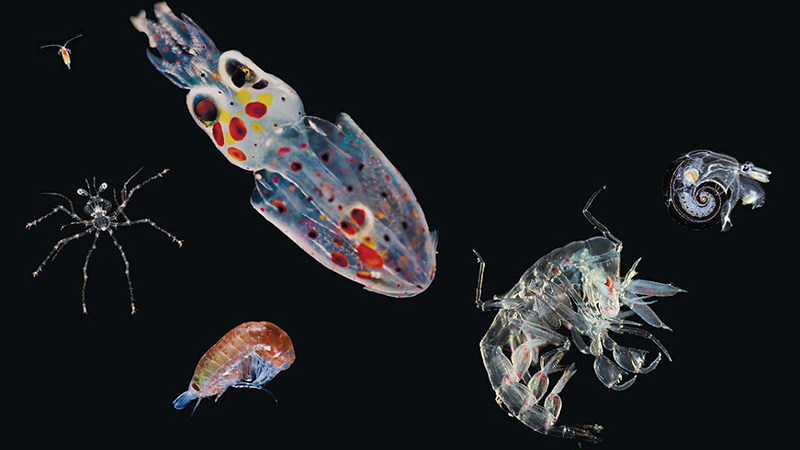 Plankton at the bottom of the sea is a food source for groupers
Plankton at the bottom of the sea is a food source for groupers
Reproduction in Groupers
The reproductive patterns of groupers vary depending on the species and geographical location.
- In Taiwan, groupers typically reproduce from March to October
- In China, groupers reproduce from April to October
- In the Philippines and Vietnam, groupers can reproduce year-round
During the spawning season, groupers gather in large schools at specific locations. These sites can be coral reefs, areas with strong currents, or they may congregate near river mouths with sandy or muddy bottoms.
Female groupers will lay a large number of eggs in a suitable location and utilize water currents to move the eggs to safer areas. As the eggs drift, they hatch into larvae, continuing to float until they are large enough to swim together in schools. A young grouper can become capable of independent movement by the age of three years.
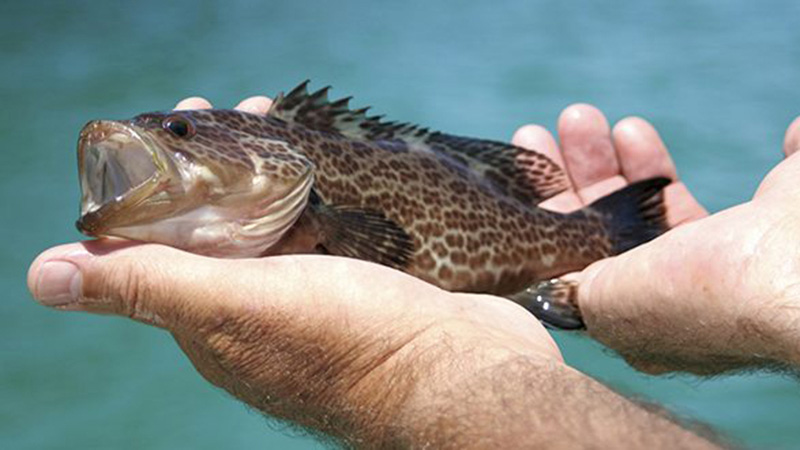 Young Grouper
Young Grouper
Where Do Groupers Live?
Groupers are predominantly found in tropical and subtropical seas, especially around coral reefs and rocky areas. They are also common in the warm waters of the Asia-Pacific region. In Vietnam, groupers are distributed from the Gulf of Tonkin to the Gulf of Thailand, with higher concentrations in the provinces of South Central Vietnam.
During the summer, groupers tend to stay closer to the shore, while in winter, they migrate to offshore areas. They are typically found in rocky crevices and around coral reefs at depths ranging from 10 to 30 meters.
 Groupers inhabit rocky crevices and areas with coral reefs
Groupers inhabit rocky crevices and areas with coral reefs
Common Types of Groupers
There is a diverse range of groupers, and some of the most commonly encountered species include the spotted grouper, tiger grouper, mouse grouper, flying grouper, yellowfin grouper, blue-spotted grouper, and pearl grouper.
However, there are also rare species such as the red grouper and the comb grouper, which inhabit coral reefs and are challenging to catch.
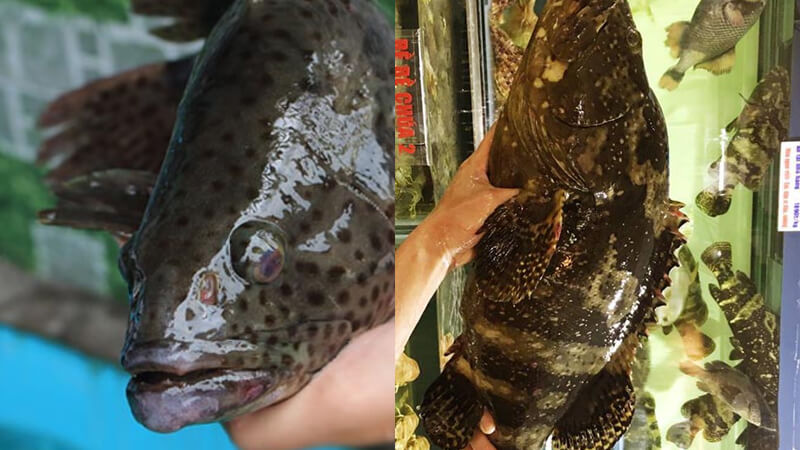 Spotted Grouper – Tiger Grouper
Spotted Grouper – Tiger Grouper
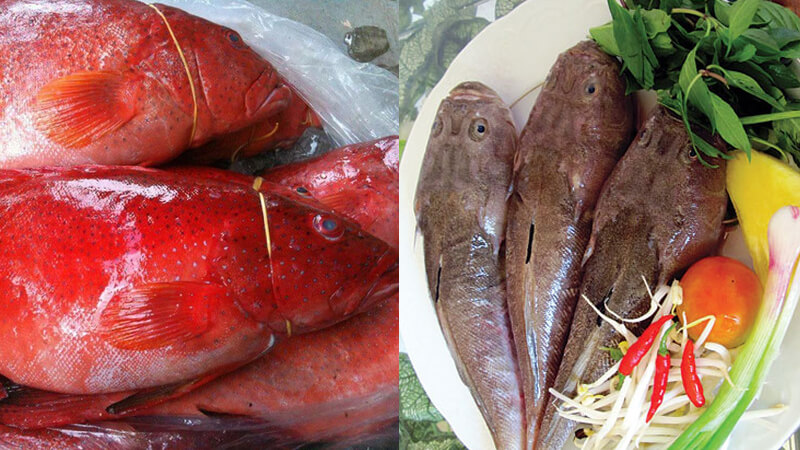 Red Grouper – Comb Grouper
Red Grouper – Comb Grouper
 Mouse Grouper – Flying Grouper
Mouse Grouper – Flying Grouper
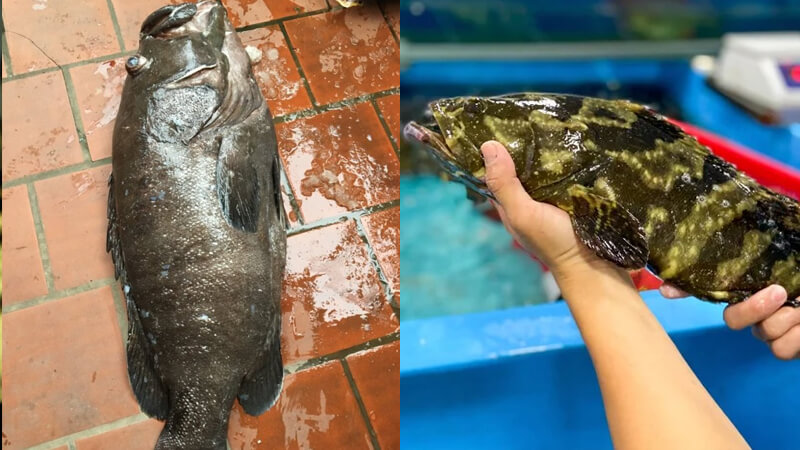 Yellowfin Grouper – Pearl Grouper
Yellowfin Grouper – Pearl Grouper
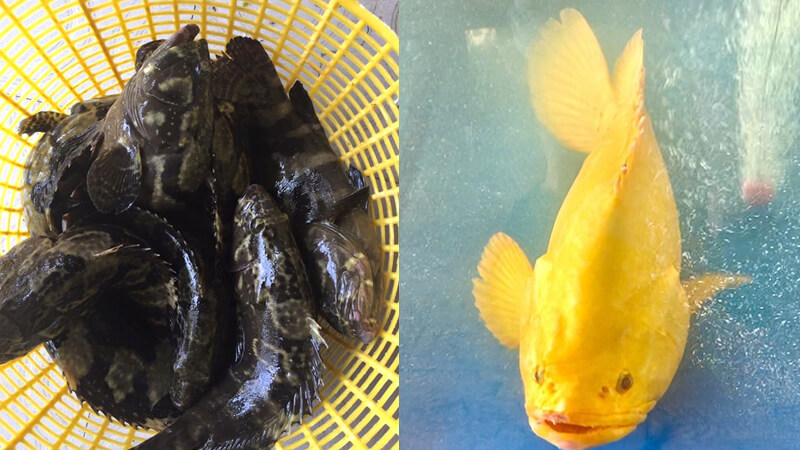 Black Grouper – Golden Grouper
Black Grouper – Golden Grouper
| Grouper Name | Characteristics | Reference Price |
| Red Grouper | Flat body, elongated, pinkish-red skin with spots | 220,000 – 320,000 VND/kg depending on size |
| Yellowfin Grouper | Large body, dark skin with stripes and spots | 270,000 VND/kg and above |
| Black Grouper | Black skin with brown stripes or spots | 165,000 – 185,000 VND/kg |
| Tiger Grouper | Black and white striped pattern | 350,000 VND/kg and above |
| Blue-spotted Grouper | Skin adorned with beautiful turquoise spots | 500,000 – over 1,000,000 VND/kg |
2 Delicious Dishes Made with Grouper
Grouper Porridge
Grouper porridge is easy to eat and simple to prepare. With basic ingredients like grouper, rice, mung beans, and ginger, you can create a delicious and nutritious meal. The porridge has a rich flavor, with a creamy texture from the mung beans and a subtle warmth from the ginger.
Grouper porridge is often recommended for malnourished children, adults who struggle to gain weight, or those prone to common illnesses due to changing weather conditions.
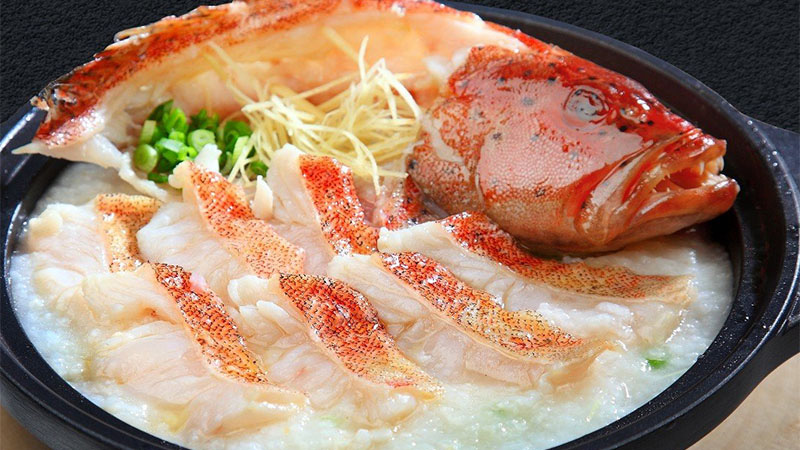 Grouper Porridge
Grouper Porridge
Steamed Grouper with Ginger
Steamed grouper with ginger, or ca kho to, is a highly nutritious dish for women who have just given birth. It has a fragrant ginger aroma and delicious, sweet grouper meat. This dish not only helps new mothers obtain essential nutrients but also increases their breast milk supply.
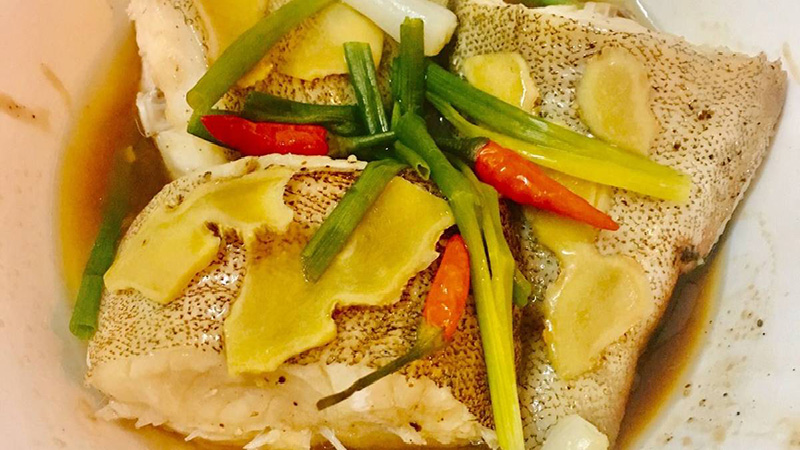 Steamed Grouper with Ginger
Steamed Grouper with Ginger
Sour Grouper Soup
Sour grouper soup has a distinct sour and salty taste. It is even more delicious when served hot or with vermicelli noodles. This dish is perfect for cooling off during hot summer days, and it also aids in diuresis and blood circulation.
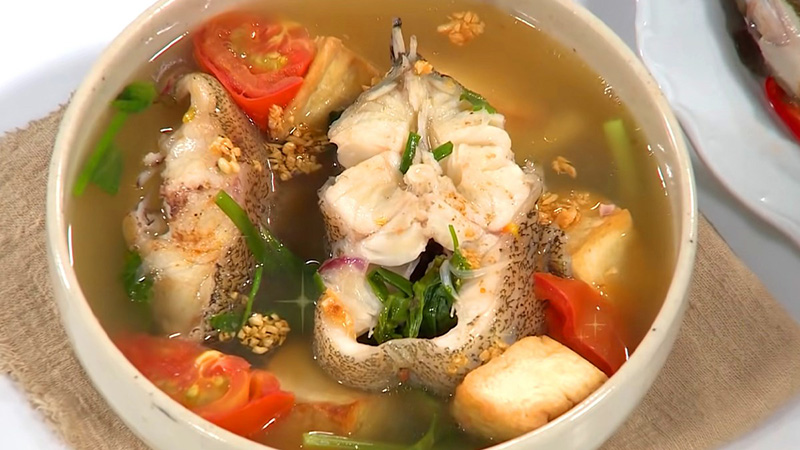 Sour Grouper Soup
Sour Grouper Soup
Braised Grouper in Soy Sauce
This dish harmoniously combines the salty-sweet flavors of soy sauce with the rich taste of grouper. It is a great option for those with diabetes and for people who are underweight.
 Braised Grouper in Soy Sauce
Braised Grouper in Soy Sauce
Steamed Grouper with Glass Noodles
Steamed grouper with glass noodles is another delectable dish worth trying. The sweetness of the grouper pairs beautifully with the chewy texture of the glass noodles and the aroma of fresh herbs.
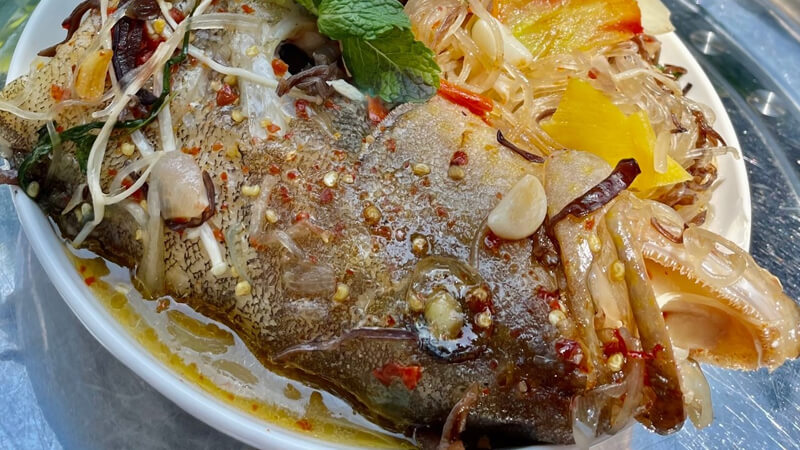 Steamed Grouper with Glass Noodles
Steamed Grouper with Glass Noodles
3 Grouper Price and Where to Buy
The price of grouper fluctuates depending on the time of year and the variety.
For frozen black grouper, the price typically ranges from 170,000 to 200,000 VND/kg.
For live black grouper, the price is usually between 300,000 and 350,000 VND/kg.
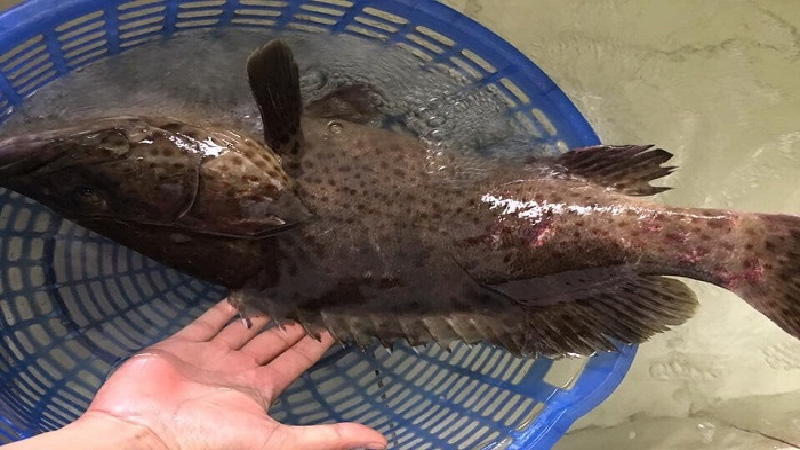 Black Grouper
Black Grouper
However, yellowfin grouper commands a higher price due to its firm, sweet, chewy, and fatty meat. It typically costs between 400,000 and 500,000 VND/kg.
 Yellowfin Grouper
Yellowfin Grouper
You can purchase grouper at fresh seafood shops, seafood markets, or online through e-commerce platforms.

































